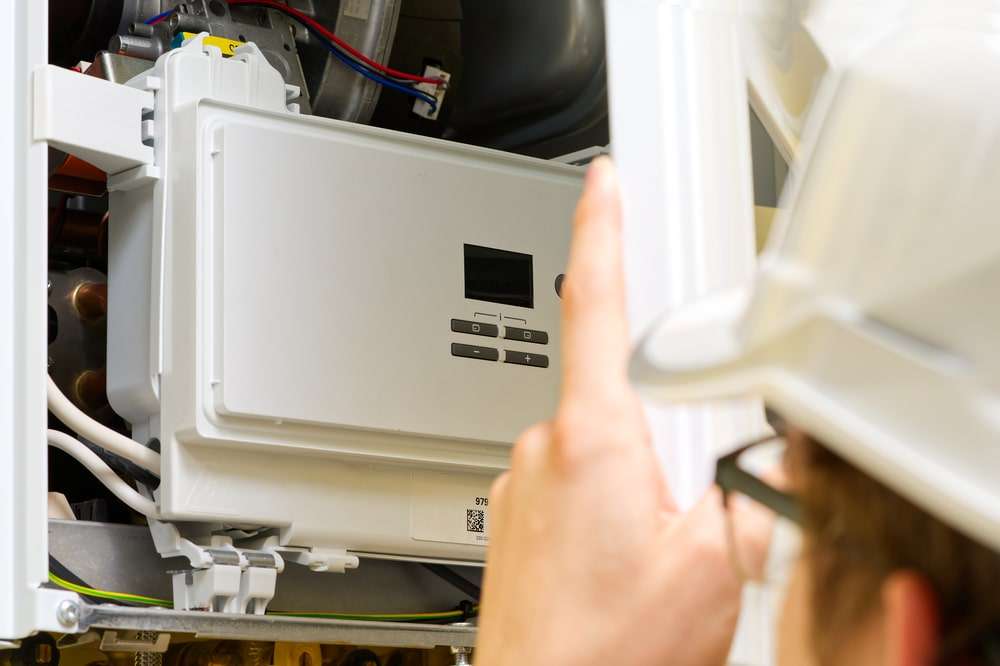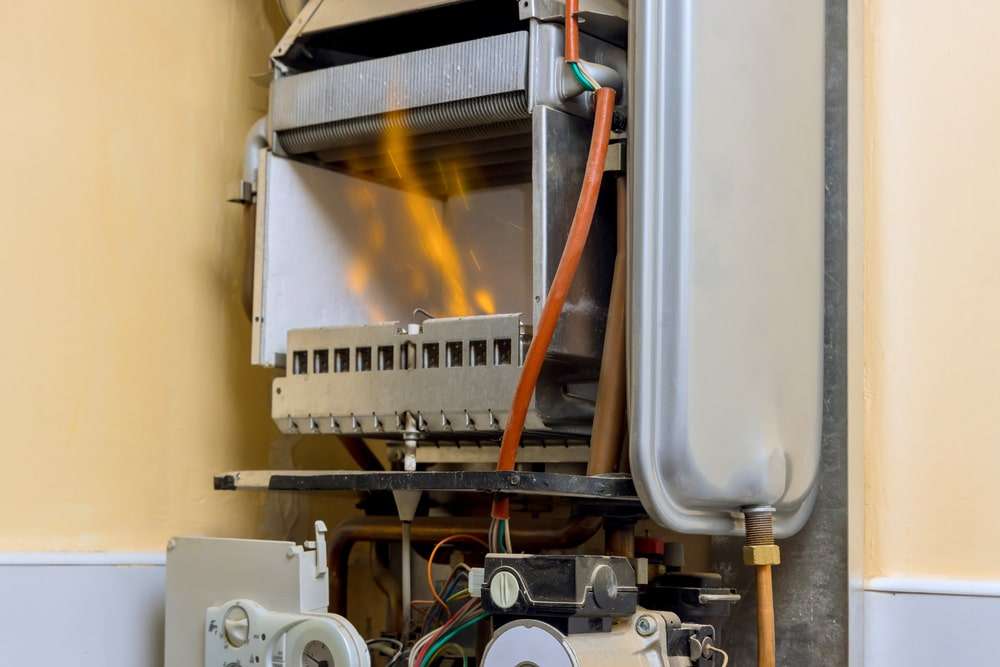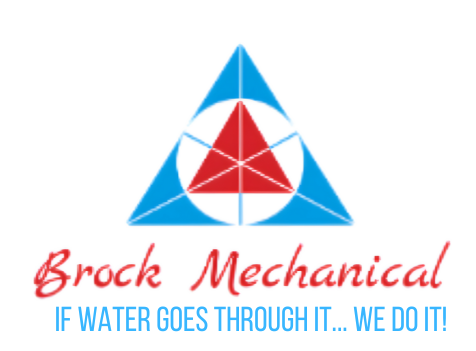
Gas furnaces are a common choice for effectively heating homes. However, like any mechanical system, they can experience issues from time to time. Diagnosing gas furnace problems can save you time, money, and discomfort.
In this blog, we’ll explore some of the most common gas furnace issues, how to troubleshoot gas furnace problems, and steps you can take to resolve or prevent these problems.
Understanding Gas Furnace Basics
Before discussing specific problems, it’s helpful to understand how a gas furnace works. Gas furnaces produce heat using propane or natural gas. The combustion process occurs in the burner, where gas mixes with air and ignites to create heat. The heat is dispersed throughout the house using vents and ducts to maintain a comfortable interior temperature.
Common Gas Furnace Problems and Solutions
Gas furnaces are vital to many households, providing efficient heating during colder months. However, they can experience problems that disrupt their performance and pose safety risks if not addressed promptly. Effective furnace troubleshooting can help identify these issues early on. Let’s delve into some of the most common gas furnace problems and explore practical solutions for each issue.
1. Lack of Heat or Insufficient Heat Output:
Diagnosis:
Several factors could cause your gas furnace to fail to produce enough heat or to have no heat. Check the settings to make sure the thermostat is operating correctly. Airflow restriction caused by unclean or clogged air filters can lower heat production.
Solution:
Thermostat Settings: Verify that the thermostat is set to heat mode and at the desired temperature. If applicable, replace the batteries.
Air Filters: Inspect and replace dirty filters regularly (typically every 1-3 months) to maintain proper airflow. Clean reusable filters as per manufacturer guidelines.
Pilot Light/Ignition: For older furnaces with a pilot light, ensure it is lit and burning steadily. For newer models, check the electronic ignition system for faults.
If these fixes don’t address the problem, contact a qualified HVAC specialist for a comprehensive assessment and possible furnace repairs.
2. Short Cycling (Frequent On and Off Cycles):
Diagnosis:
Short cycling occurs when the furnace frequently switches on and off. Problems with the thermostat, airflow, or malfunctioning parts like the flame sensor typically cause it.
Solution:
Thermostat Calibration: Ensure the thermostat is calibrated correctly and not located near heat sources or drafts that can affect its readings.
Airflow Check: Verify that air registers and vents are open and unobstructed. Clean ducts and vents as needed to promote smooth airflow.
Flame Sensor Maintenance: Clean the flame sensor with a gentle cloth or fine sandpaper to eliminate carbon buildup. Persistent short cycling may indicate more complex issues like a malfunctioning blower motor, faulty limit control switch, or control board, necessitating professional intervention.
3. Strange Noises (Rattling, Banging, Whistling):

Diagnosis:
Unusual noises from your gas furnace can indicate loose components, damaged parts, or airflow problems within the system.
Solution:
Inspect Components: Check for loose screws, bolts, or panels and tighten them as needed. Pay attention to blower fan blades, motor mounts, and ductwork for signs of damage.
Clear Obstructions: Remove any objects or debris around the furnace that could be causing vibrations or airflow restrictions.
Professional Inspection: If the noises persist or worsen, schedule a professional furnace inspection to identify and resolve the underlying cause, including worn-out parts or ductwork issues.
4. Pilot Light or Ignition Problems:
Diagnosis:
Problems with the pilot light or ignition mechanism can prevent the furnace from starting or cause sporadic heating issues.
Solution:
Pilot Light Inspection: For older furnaces with a pilot light, ensure the flame is lit and steady. Clean the pilot assembly to remove dirt or debris that may obstruct ignition.
Electronic Ignition Troubleshooting: For newer furnaces with electronic ignition, check the control panel for error codes and follow the manufacturer’s instructions for troubleshooting.
Professional Assistance: If you need help to resolve ignition issues independently, contact a qualified HVAC company for diagnosis and repair. Properly functioning ignition systems are essential for consistent heating and safety, so timely maintenance is crucial.
5. Uneven Heating or Cold Spots:
Diagnosis:
Uneven heating throughout the house or noticeable cold spots can result from blocked vents, ductwork issues, or inadequate insulation.
Solution:
Vent and Register Inspection: Ensure that no draperies or furniture are blocking the openings of any vents or registers. If needed, adjust the dampers to equalize the airflow.
Ductwork Examination: Inspect ducts for leaks, gaps, or blockages that may hinder proper heat distribution. Seal leaks and repair ducts as needed.
Heat Exchanger Check: Inspect the heat exchanger for cracks or damage, as this can impact heat distribution and efficiency.
6. Gas Valve Issues
Diagnosis:
Gas valve problems can prevent your furnace from receiving the necessary gas to produce heat, leading to inconsistent heating or a complete lack of heat.
Solution:
Gas Supply Check: Verify that the gas supply to the furnace is turned on. Check for any obvious signs of gas leaks or obstructions.
Valve Operation: Inspect the gas valve to ensure it is in the correct position (open) and functioning properly.
Professional Inspection: If the gas valve appears to be faulty or damaged, contact a professional HVAC technician to inspect and replace the valve. Handling gas components can be dangerous, so professional intervention is crucial for safety and proper repairs.
7. Clogged Air Filter
Diagnosis:
Clogged or dirty air filters can restrict airflow, reduce furnace efficiency, and lead to overheating or short cycling.
Solution:
Regular Replacement: Check and replace air filters regularly (typically every 1-3 months) to maintain optimal airflow and efficiency.
Filter Type: Ensure you’re using the correct type of furnace filter for your furnace. Some furnaces require specific filters that meet certain efficiency ratings.
Reusable Filters: For reusable filters, follow the manufacturer’s cleaning instructions to maintain proper performance. Regular maintenance of air filters can prevent many common furnace issues and ensure a longer lifespan for your heating system.
8. Furnace Switch or Circuit Breaker Issues
Diagnosis:
The furnace switch or circuit breaker may occasionally be turned off or tripped, preventing the furnace from operating.
Solution:
Furnace Switch: Locate the furnace switch (often a standard light switch located near the furnace) and ensure it is in the “on” position.
Circuit Breaker: Check the furnace’s circuit breaker in your electrical panel. If it has tripped, reset it by turning it off and then back on.
Electrical Issues: If the switch or breaker continues to trip, this could indicate an electrical issue within the furnace system. Contact an HVAC professional to inspect and repair any underlying electrical problems to prevent potential hazards.
Key Takeaways: Maintain Your Gas Furnace for Long-Lasting Warmth
Gas furnaces are reliable and efficient heating solutions, but they can encounter various issues over time. Understanding common gas furnace problems such as lack of heat, short cycling, strange noises, ignition issues, and uneven heating, as well as their respective solutions and preventive maintenance measures, can help you keep your gas furnace in optimal condition. With proper care and maintenance, your gas furnace can provide reliable warmth for years.
Brock Mechanical offers comprehensive gas furnace services in Howell, including diagnosing and repairing common issues like lack of heat, short cycling, ignition problems, and uneven heating. Our experienced technicians perform thorough inspections, provide expert solutions, and prioritize safety to ensure efficient and reliable heating for your home.


